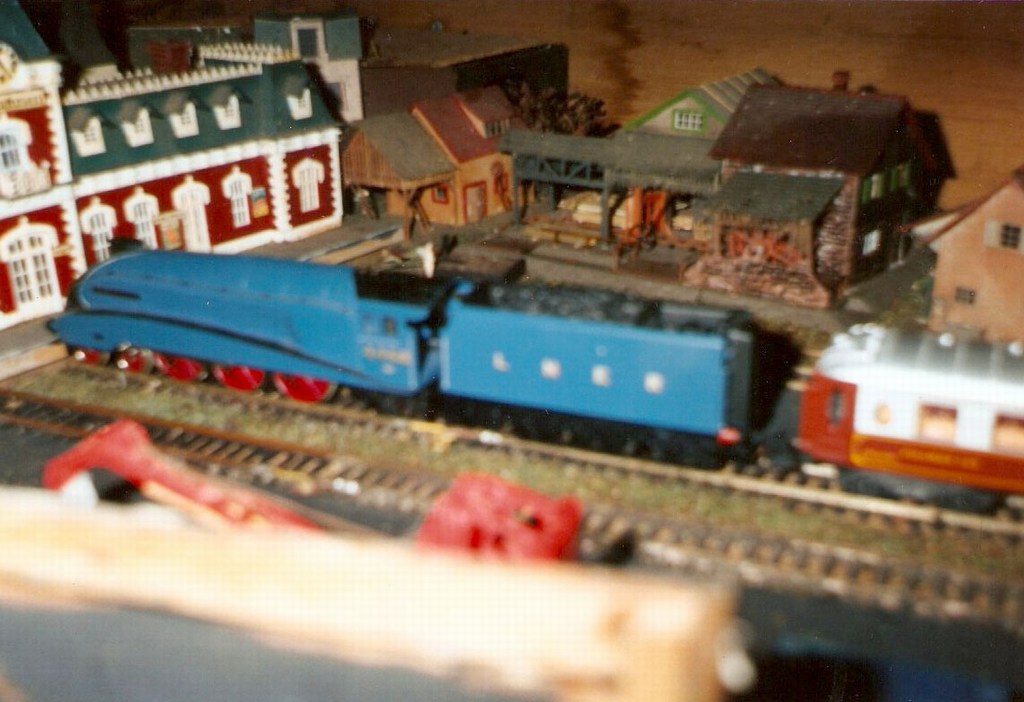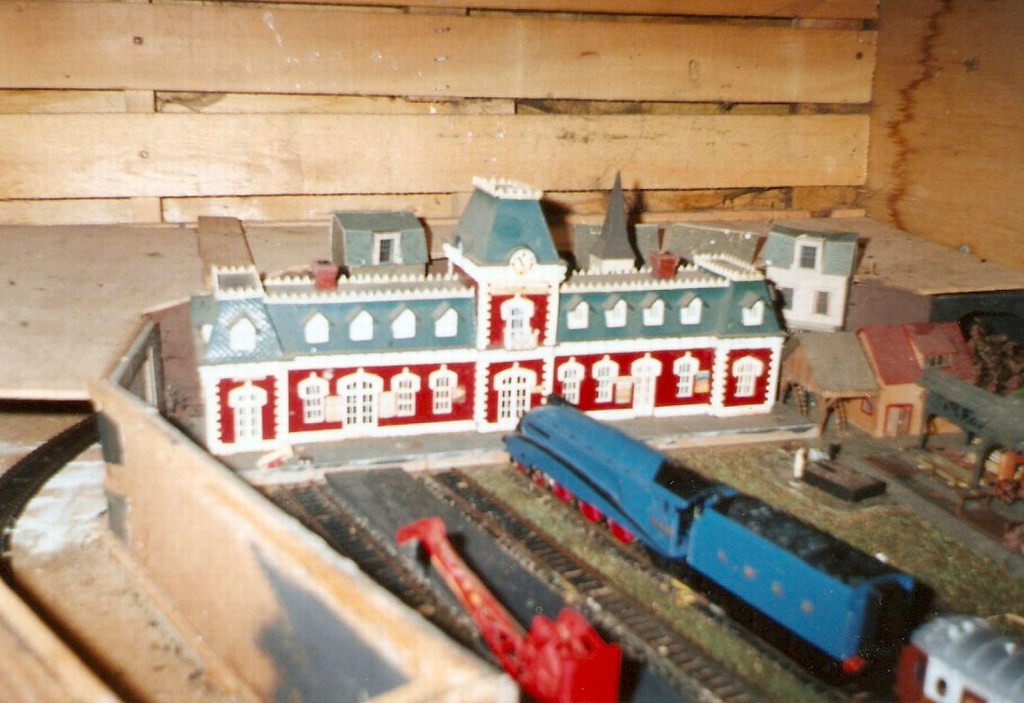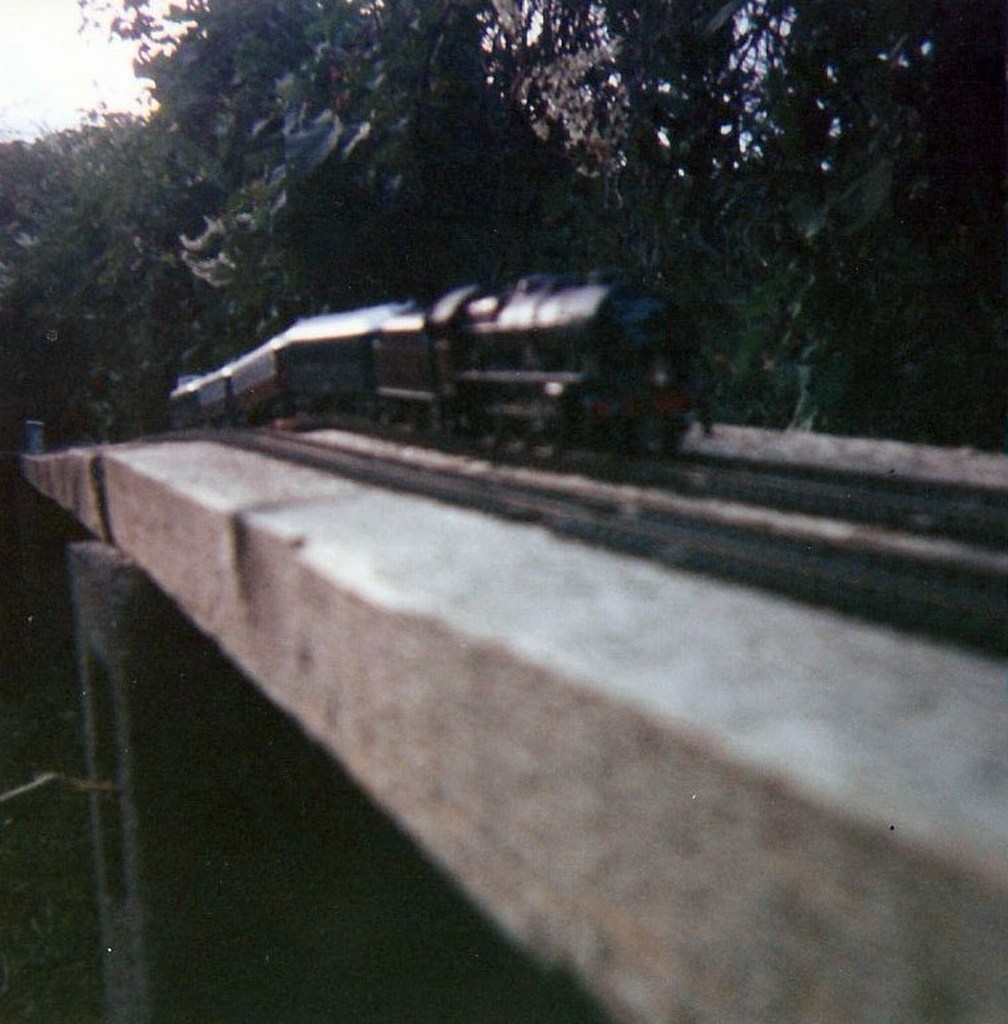I was just a wee small lad when construction started on a layout that would occupy my summer holidays for a good 5 years!
The layout was always very simple but evolved greatly over the years.
The basic idea was sound. put a OO scale model railway in the garden! Loads of space! and finally a chance for the trains to stretch their legs! Boy, was there a learning curve! The layout existed for approx. 8 years in total. for a couple of those it didn't get used at all. towards the end it was used very heavily in the summer before I went off to university and my father disappeared to sunnier places.
Before I go too far, let me apologise about the quality of the pictures. This was long before the days of digital cameras. There seemed to be no reason at the time to record our activities. and photographs were expensive!

First of all, let me explain a few things about garden railways. first of all, detail is certainatly not the most important feature of the layout! the pleasure if spending the afternoon in the garden far outweighs the lack of detail. The enjoyment dosent come from operating a scale layout. it comes from sitting in the sunshine and enjoying the sight of seeing the trains roll past.
The layout started as a dogbone formation with one loop in the shed surrounding what was the main station.

This was actually already the Mk2! the Mk1 was constructed about 18 inches above this. the original track followed the contours of the garden. BUT you have to bear in mind that the rolling stock available to your average child at the time was Hornby tender drive locos! At the best of times they weren't great! But for a child of the 90's it was pretty amazing to have my own pacific! the big problem was that there was no way it would go up the inclines! So while the flower bed end of the layout stayed pretty much the same height throughout the life of the railway, the first big thing to change was that the terminus was lowered to about a foot above floor level.

Inclines add a huge amount of interest to indoor and exhibition layouts, but in the garden they are a nightmare. They are a constant source of derailments, stock crawling to a standstill.
The same went for corners. I was always trying to get the maximum radius I possibly could simply in order to keep as many of the wheels on the rails as possible.
Gradually the layout evolved. A compost heap arrived and a loop around that replaced the one in the shed. various stations and branch lines came and went over the years. there was never much in the way of buildings. the odd shed here and there. but that was about it.

Forget such things as ballast or anything like that. it was kept simple and made as reliably as possible.
Every year the running season began with a good period of repairs. Part fo the main line was made from rrofing timbers suspended between breese blocks. The roofing timbers always sagged over the winter so the simple fix was to lift that section of track and reverse the timbers and relay the rails.
American rolling stock always ran well. Athearn blue box made up a good portion of the rolling stock. Fleishmann stock was also a good bet.
The main question every visitor asked when they visited.... "What happens when it rains?" My stock answer was always "it gets wet"! Rain and water was never a problem. we didn't run it in the rain (although when I got an Athearn DD40 for Christmas one year I did run it on Christmas day!).
The far bigger problem was the lack of UV resistance in the Peco track. the sun would turn the sleepers brittle after a couple of years and that made relaying that stretch almost impossible without some new rail.
Another thing to bear in mind if your attempting something like this yourself, is cable runs. voltage drop over the length of an indoor layout is often negligible. but over a 60' garden layout it can be a big problem to the extent that trains will grind to a halt at the most inconvenient places! often furthest from where you are sitting with the controller!
I think there was only 1 year where nothing was run. I cant remember why but I think other hobbies took up my time.
It was great fun building it with my father. it was a really great way to spend quality time together and I have very fond memories of the garden layout.
Fore some reason, we never took many pictures of it. the ones here are ones that I found in a scrap book. Digital cameras were barely invented and for a young boy, photography was very expensive!
Peter Morgan
If you are thinking of a garden layout, my advice is to go for it!
BUT KEEP IT SIMPLE!


